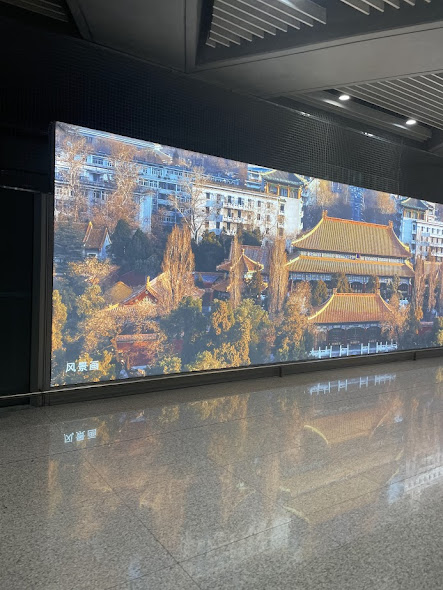Exploring Ulaanbaatar: A Journey into Mongolia's Rich Culture and Ancient Connections
Introduction:
Stepping foot in Ulaanbaatar, the capital city of Mongolia, I embarked on a captivating journey that introduced me to the vibrant culture of the Mongolians and their historical connections with neighbouring regions. From the majestic Chinggis Khan statue and the temple on the hill to the intriguing Turtle Rock, each experience added depth to my understanding of this fascinating country. Join me as I recount my first-time visit to Ulaanbaatar and the enchanting discoveries that unfolded along the way.
Chinggis Khan Statue and Temple on the Hill My exploration began at the imposing Chinggis Khan statue, an awe-inspiring tribute to the legendary founder of the Mongol Empire. Towering at an impressive 40 meters, the statue majestically overlooks the surrounding steppe, reminding visitors of the nation's rich historical heritage. As I stood before the statue, I couldn't help but feel a sense of awe and admiration for the Mongolian people's enduring connection with their past.
From there, I made my way to the temple perched on the hill, a serene place that exuded tranquillity. The temple, known as the Zaisan Memorial, offers panoramic views of the cityscape and the vast Mongolian landscape beyond. It was a moment of contemplation, allowing me to reflect on the spirituality and cultural traditions that have shaped the lives of the Mongolian people.
Natural Wonders:
Turtle Rock and Beyond Leaving the urban landscape behind, I ventured towards the captivating natural wonders that surround Ulaanbaatar. One such marvel was the Turtle Rock, a peculiar rock formation resembling a giant turtle emerging from the earth. As I gazed at its distinctive shape, I marveled at nature's artistry and the significance it holds in Mongolian folklore.
Beyond Turtle Rock, the landscape unfolded into a breathtaking expanse of vast steppe and rolling hills. This untamed wilderness served as a reminder of Mongolia's close connection with nature and its nomadic traditions. It was evident that the Mongolian people's lives and livelihoods are deeply intertwined with the land and its abundant resources.
Culinary Delights and Cultural Exchange:
No trip would be complete without indulging in the local cuisine, and Ulaanbaatar didn't disappoint. I savoured delicious meals at local restaurants, sampling traditional dishes such as khuushuur (deep-fried meat dumplings) and buuz (steamed dumplings). Each bite offered a tantalizing fusion of flavors, reflecting the Mongolian people's resourcefulness in creating meals from their livestock-centric culture.
While exploring the city, I noticed the diverse array of visitors from around the world. However, it became apparent that I was one of only a few Africans present during my visit. This realization sparked a hopeful desire for increased cultural exchange and diversity in Ulaanbaatar, envisioning a future where people from all corners of the globe can come together and share in the unique experiences Mongolia has to offer.
Mongolia:
A Land of Livestock and Harmony With approximately 80 million livestock roaming its vast landscapes, Mongolia's close bond with its animals is undeniable. The immense herds of horses, cattle, sheep, and goats not only provide sustenance for the nomadic communities but also contribute to the country's cultural identity.
Interestingly, despite the vast livestock population, Mongolia's human population remains relatively small, with around 3 million inhabitants. This stark contrast serves as a testament to the country's commitment to preserving its natural landscapes and nomadic heritage.
Conclusion:
My journey to Ulaanbaatar was a captivating exploration of Mongolia's rich culture and historical connections. From the grandeur of the Chinggis Khan statue and the serenity of the temple on the hill to the marvels of Turtle Rock, each experience revealed a piece of the nation's intriguing story. As I departed the city, I carried with me a renewed appreciation for the Mongolian people's deep connection with their land and a hope for a future where cultural diversity thrives in this remarkable corner of the world. I look forward to returning to Mongolia one day, eager to uncover even more of its hidden treasures and witness the continued growth of cultural exchange.












Comments
Post a Comment